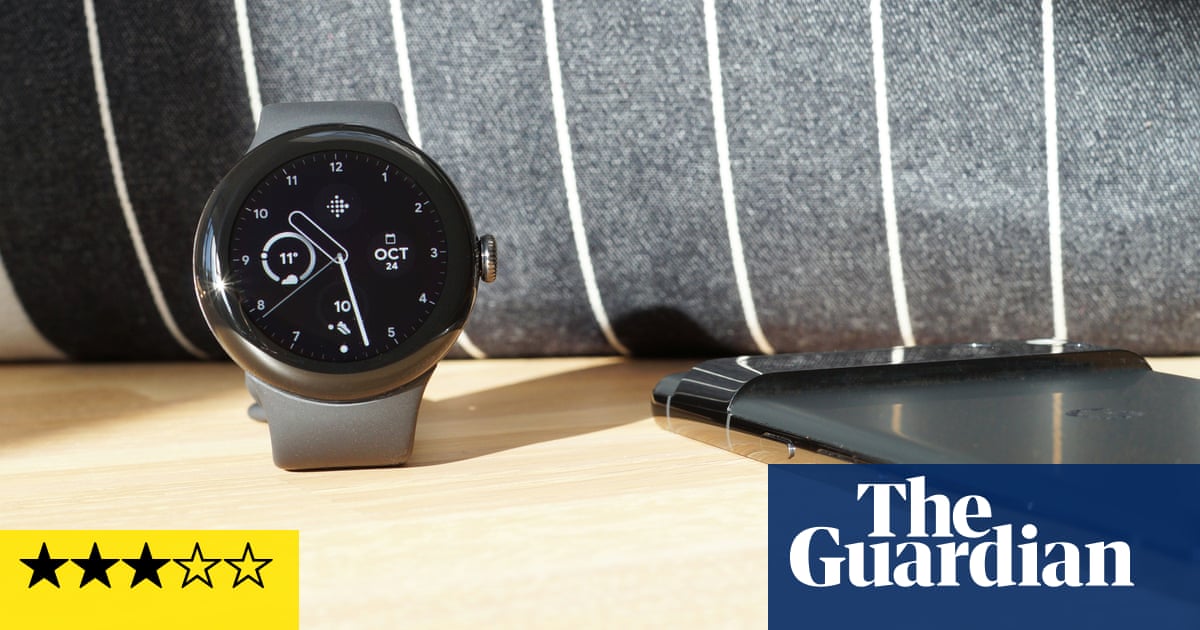
The Pixel 5 is Google’s top smartphone for 2020. It comes with 5G and a simplified design that’s very similar to the excellent, cheaper Pixel 4a.
It’s available in either black or green and costs £599, fitting in above the larger but cheaper £499 Pixel 4a 5G and the smaller £349 Pixel 4a.
Google has ditched the hi-tech Soli radar system and face recognition from the Pixel 4 and gone back to basics for a much simpler design. It is all-screen on the front, with an aluminium body that’s texture-coated aiding durability and grip.
Side by side with the slightly smaller Pixel 4a it is very difficult to tell the phones apart. The Pixel 5 has a larger screen (6in v 5.8in on the diagonal) that has a faster 90Hz refresh rate, which makes scrolling and animations visibly smoother. The screen is bright, colourful and crisp enough, but can’t quite match the best from Samsung, OnePlus or Apple.
Weighing just 151g, the Pixel 5 is light compared with most rivals, which makes it one of the easiest smartphones to handle.
Specifications
Screen: 6in FHD+ 90Hz OLED (432ppi)
Processor: Qualcomm Snapdragon 765G
RAM: 8GB of RAM
Storage: 128GB
Operating system: Android 11
Camera: 12.2MP + 16MP ultrawide, 8MP selfie
Connectivity: 5G, eSIM, wifi 5, NFC, Bluetooth 5 (AAC, AptX/HD, LDAC) and location
Water resistance: IP68 (1.5 metres depth for 30 minutes)
Dimensions: 144.7 x 70.4 x 8mm
Weight: 151g
Lower-performance chip with good battery life
The Pixel 5 may be Google’s top smartphone, but it doesn’t have a top-spec processor. Instead, it uses the Qualcomm Snapdragon 765G, which is a 5G-capable upper- to middle-range chip recently found in the £379 OnePlus Nord and in the cheaper £499 Pixel 4a 5G. Most flagship smartphones use Qualcomm’s Snapdragon 865 chip or similar, which is almost twice as fast on paper.
In the real world, the Pixel 5 never felt sluggish or slow in day-to-day usage. But when I shot a lot of photos in quick succession, the lower performance meant the camera app took longer to process them after shooting. Gaming performance was also reduced, but not to a level that most will notice.
Battery life is good, with 36 hours between charges when the screen is on for almost six hours and 5G is being used for two hours, the rest spent on wifi. That means the Pixel 5 should last from 7am on day one until 7pm on day two. For comparison, last year’s Pixel 4 lasted only 14 hours between charges, while most 5G smartphones with high refresh-rate screens last closer to 32 hours.
Google’s new extreme battery saver system will extend battery life greatly, when needed, by only allowing a select group of apps to run and suppressing all others.
Sustainability
Google does not provide an estimate for the expected number of full charge cycles from the Pixel 5 batteries. However, the typical lifespan of a smartphone battery is at least 500 cycles while maintaining at least 80% capacity. The Pixel 5 is generally repairable. Out-of-warranty repairs cost £110 for the screen or about £60 for the battery through one of Google’s repair partners, iSmash, or via the Google Store.
The Pixel 5 casing is made of 100% recycled aluminium, part of Google’s commitment to include recycled materials in all its products launching from 2022. The company publishes environmental impact reports for some of its products, including the Pixel 5. Google will recycle all Pixel devices free of charge.
Android 11, Google’s way
The Pixel 5 is one of the first smartphones to be released running the latest version of Android 11 and can expect a minimum of three years of operating system and security updates, which is still some way behind Apple’s five-year support for iPhones.
The Pixel’s version of Android is slick and well-optimised. Generally speaking, it is attractive and simple, and works like most other versions of Android, with full adoption of the gesture controls, upgraded media controls and conversation options built into Android 11.
But on top are a few Google exclusives such as automatic transcription in the improved Google Recorder app, new Live view for Google Maps, which uses augmented reality to point out where your friends are, improved smart reply suggestions for messages in chat apps, and the superfast new Google Assistant experience.
Camera
Google continues to be the market leader in adaptable point-and-shoot photography in most lighting conditions. On the back, the Pixel 5 has a standard 12.2MP camera alongside a 16MP ultrawide camera, but no telephoto camera for optical zoom. Instead, Google is relying on its SuperResZoom technology, which is a type of digital zoom that is arguably capable of matching a 2x optical zoom, but has its limits beyond that.
The still photos are fantastic: full of drama, detail and well-balanced colours, and with excellent management of high contrast and difficult lighting, including in dim settings. The ultrawide camera is in line with the best of the competition, but is softer on detail than the main camera. Google’s excellent Night Sight is now triggered automatically in low light and can be used on all the cameras and while using portrait mode, which makes it easy to capture portraits in low light.
A new portrait light editing system allows you to shift the angle and intensity of light around a subject too, just using your finger, with excellent results.
New video shooting at up to 4K 60 frames per second and better stabilisation are significant improvements, including the fun cinematic pan that slows movement a little and stabilises the frame for a movie-like pan. Samsung and Apple phones are still better for video, but Google is slowly catching up.
Observations
Indoor 5G reception was weaker than the OnePlus 8T or Samsung Galaxy Z Fold 2.
The new bedtime mode allows you to turn on do not disturb, turn off the always-on display and other bits either on a schedule or when you plug in the phone at night.
The screen vibrates to produce sound instead of having a separate speaker at the top, which is great for phone calls, but mediocre for stereo sound on videos – most of the sound comes out of the bottom of the phone instead.
Price
The Pixel 5 costs £599 and is available in black or green.
For comparison, the Pixel 4a has an RRP of £349, the Pixel 4a 5G costs £499, the OnePlus 8T £549, the OnePlus Nord £379, the iPhone 12 £799 and the iPhone SE £419.
Verdict
The Pixel 5 is an excellent Google phone that gets back to the basics of being a good smartphone while adding useful features and nice touches.
The battery life is solid, the 90Hz screen is good and smooth, the fingerprint scanner on the back is simple and fast, and the camera is another masterclass in simple, reliable point-and-shoot excellence. No other phone makes you look as good a photographer with no effort.
The size and feel of the device is really nice too; it is light, with a soft, textured finish that is easy to grip and appears durable. If you’re fed up with large, heavy, expensive, slippery glass-backed phones, the Pixel 5 will make a refreshing change.
But the processor simply doesn’t compare in raw processing or graphics power to those in the new iPhones or Galaxy S20. Day-to-day performance is good and the phone feels just as snappy as the best on the market, so I don’t think it will matter to most users, but gamers looking for the best graphics and frame rates should look elsewhere.
The Pixel 5 ends up competing with the significantly cheaper £379 OnePlus Nord, with the same specs, or the £549 OnePlus 8T, with a top processor. Google is even competing with itself: the £499 Pixel 4a 5G has the same chip and camera with a larger screen, while the £349 Pixel 4a lacks 5G but isn’t far off on the rest.
While the Pixel 5 is a great, simple phone, it isn’t quite as good value as its £599 price might suggest when you compared it with the Android competition.












